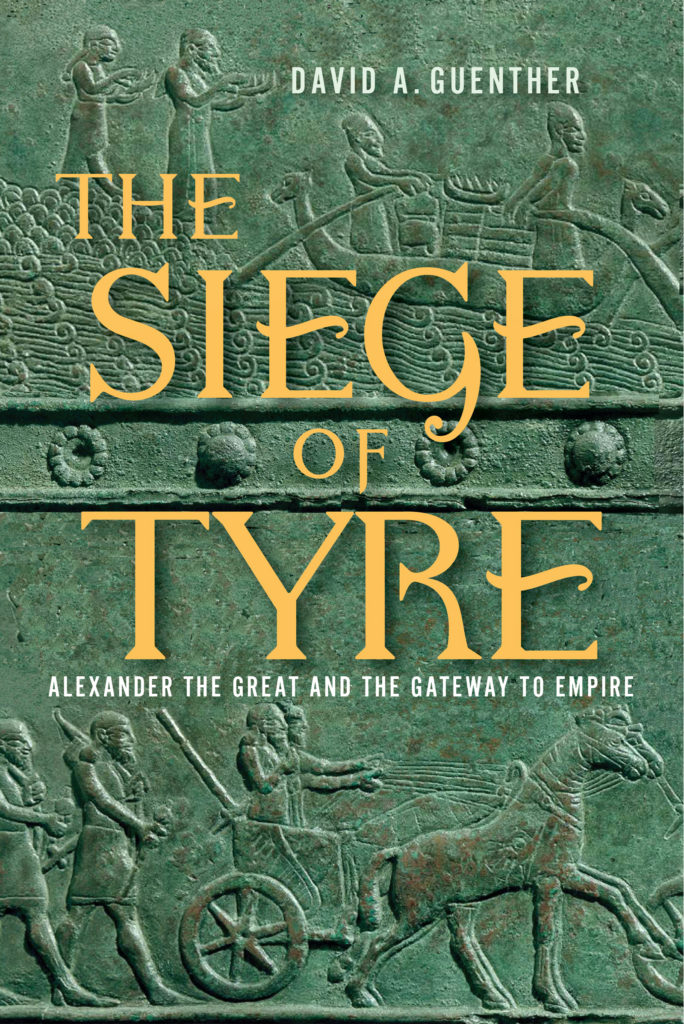

The Siege of Tyre
Alexander the Great and the Gateway to Empire
$32.50 Add to Cart Save 25% on every book by joining our Book Club


The island city of Tyre along the coast of Lebanon was for centuries an impregnable fortress and key to unlocking Phoenician and Persian power in the Near East. Its fall was first prophesied in the Book of Ezekiel; but it would not be Nebuchadnezzar, king of Babylon, who would take the city as the Bible foretold, but a Macedonian warrior king, Alexander. Alexander’s siege of 332 BC was one of the most remarkable events in the classical world. “It was the capture of Tyre that did the most to enhance Alexander’s reputation for invincibility,” wrote historian Waldemar Heckel, while classicist Paul Cartledge observed, “If Alexander deserves permanent commemoration as a general, then it is above all in his capacity as a besieger, and of all his sieges Tyre was his masterpiece.” Yet books about Alexander and his conquests often simply retell the story as recorded by ancient authors—even though these accounts often disagree—and ignore competing theories among modern scholars about what may have happened given scientific and textual discoveries.
The Siege of Tyre: Alexander the Great and the Gateway to Empire by David A. Guenther is the first book-length treatment of this critical and fascinating campaign, featuring catapults, triremes, religious invocations, close combat, and marvels of engineering, including a massive manmade causeway from the mainland to the island. The siege is thoroughly analyzed from the standpoint of what is plausible given the nature of the technology of the time and what we now know of the geology and physical fortifications of ancient Tyre. The book begins with the background leading up to the siege: Alexander’s army, his invasion of Asia Minor, the sieges of Miletus and Halicarnassus, and the battles of the Granicus and Issus. It also describes the culture, people, cities, and economy of ancient Phoenicia to place the story of the siege in a broader context. Critical to the siege were the evolving technologies in the ancient Mediterranean world, including innovations in catapult design, military engineering, and naval architecture. Guenther also takes into account recent scientific discoveries about the geology of the ancient seabed around Tyre and its effect on the siege. Finally, the book points out possible gender-biased views on topics such as sacred temple prostitution among the ancient Phoenicians and the fate of women in besieged cities of the ancient world. An engrossing blend of ancient wonder and historical and technological analysis, The Siege of Tyre is the remarkable story of Alexander the Great’s “masterpiece.”

David A. Guenther is an Emeritus Professor at the University of Oregon. He has taught for over thirty years and authored many award-winning journal articles. A veteran of the United States Marine Corps, he lives in the Pacific Northwest with his wife.
“In an absorbing, meticulously researched study, Guenther hones in on Alexander’s 332 BC siege of what was once a Phoenician island—now attached to the coast of Lebanon. In hot pursuit of the Persian emperor, Darius, Alexander made the strategic move to disband the Macedonian-Greek navy, as it was no match for the powerful Persian navy, and instead concentrate on striking by land the string of Phoenician coastal towns that made, supplied, and repaired the great Persian ships. After enduring a long march into Asia Minor, then clashing with and scattering Persian troops in the battles of Granicus and Issus, Alexander moved down the Phoenician coast to subdue the home ports, from Arados to Sidon—and all except Tyre accommodated him. The Tyrians resisted and killed Alexander’s envoys, ensuring a violent outcome. The author undertakes in detail the elaborate engineering feats that Alexander and his army used to besiege the recalcitrant Tyre, starting with the “mole,” a kind of massive pier to reach the city’s walls. Despite the ingenious resistance of the Tyrians, Alexander now had a reinforced navy arrive to block the harbor, as well as the use of his catapults and rams, and perhaps “ladders” (the author rather humorously debates the various historians on the scholarly interpretation of certain ancient Greek words), to breach the walls at last. Drawing from ancient sources as well as from modern historians, Guenther dwells extensively on the makeup of Alexander’s army and marvelous engineering for a surprisingly readable adventure. Suspense and action galore in this original, accessible study of an otherwise well-known historical personage.”—Kirkus Reviews
“David A. Guenther tells the story of an epic episode in ancient history: the siege of the glorious and powerful island of Tyre by Alexander the Great. Through a meticulous analysis of the Greek and Latin accounts of the siege, Guenther sheds light on a fascinating unequal struggle: Alexander’s numerical and technical superiority and audacity against the fierce resistance of the Tyrians withdrawn to their supposedly impregnable island—with the gods in the middle, as at Troy, helping one side or the other. This book offers a timely reflection on past and present imperial dynamics, and on war, with its excesses and regulatory processes.”—Corinne Bonnet, Scuola Normale Superiore di Pisa